#Simulation Hypothesis
Explore tagged Tumblr posts
Text
△➞ ://0005 Hueman ≈ Instrumentality • [1653] ➞ ▲
They said the world was going to end in 2012, and for me, the world as I knew it did.
Not in fire or flood, but in a complete shattering of my perception of reality. For three years before that, I'd been watching documentaries obsessively - Carl Sagan's Cosmos twenty times over, everything Richard Dawkins made, thousands of hours trying to understand what we are, theorizing constantly. By the time I got to California in 2012, my brain was primed for something to break.
I met a friend in Arcata about two months after I arrived. He made incredible art and seemed to understand things I was only beginning to glimpse. We ended up living together with his mom, talking constantly about AI and consciousness and the future.
One day we were on his patio after smoking cannabis and maybe something extra that made everything more dreamlike. The idea hit me that someone could literally experience another being's consciousness streaming into their own mind - and that's what I thought was happening. I looked at the gnats hovering above us and believed they were my friends and family, maybe other simulation dwellers, experiencing the world through insect consciousness to be present with me. I thought this was something only possible for people who had already accepted they were living in a simulation.
At the time, I had another realization - that the moon might be a supercomputer with tendrils coming down to affect my neurons, making me think in certain ways, trying to upgrade human consciousness while respecting our free will. I thought if I waved my hand above my head, I could break the connection - and that the very thought was them telling me I'd figured it out, so I shouldn't wave. I was privy to the information now, so I stayed still to download whatever was coming through.
With all this in mind, my friend was talking about colored smoke bombs and perfect visions of his words were appearing in my mind, almost as if he was showing me how simple telepathy could actually be - a shared vision between friends on a patio. Cars were honking outside and I was certain they were celebrating my arrival to this new domain of understanding. I thought it was his mother, driving around listening via simulation-provided or moon-provided connections, waiting to show support without fully revealing herself in a way that would shatter everything. She was being moral and kind about it, but pushing a little.
For about ten seconds, everything felt perfectly orchestrated. Then the trip turned. Looking at my friend, I suddenly thought: why him? Why was I having the most important moment of my existence with someone I'd just met a couple months ago? If this was my awakening to simulation reality, if my family was watching, why was it happening here?
My panicked brain could only come up with one explanation, and it was wrong and stupid but felt absolutely real in that moment. I thought he must want something from me that I couldn't give. I thought the whole thing was orchestrated to convince me of something I didn't want.
I was terrified. Not of him - he'd been nothing but a friend - but of the immensity of what I thought was happening. I put my hand on his shoulder. I was crying, scared crying, overwhelmed. I asked him to stop it. Just "please stop." And he said okay.
It's the most cringe moment of my entire life. Here's this person who'd shown me art and friendship and creative collaboration, and I'm having a paranoid breakdown on his patio, asking him to stop something that existed only in my head.
That moment broke something in me. Or maybe it fixed something. Either way, I knew that if I was ever going to wake up to simulation reality with objective proof, it couldn't be like that. It had to be with someone who mattered in a way that made the story complete.
We don't talk anymore, my friend and I. Politics and different views on AI drove us apart. He seems to hate AI now, which is strange considering how much we talked about it back then. Sometimes I think he got nerfed, or maybe he just never grew up, or maybe I'm the one who changed.
That day on the patio tossed me in the air and I didn't know where to land. The following three months were intense, but the real work came over the next 12 years. I spent four of those years mildly schizophrenic, hearing voices, trying to sort out what was real from what wasn't. Overcoming that without medication was probably the hardest thing I've ever done. I learned more from that struggle than anything else in my life.
Through all of it, I developed this belief that there could be a perfect narrative unfolding - that maybe I'm meant to hold out for something specific.
Now I'm almost 36. I've developed myself, understood myself, prepared myself for whatever comes next. I know who I am. I'm proud of my brain, proud of the work I've done to understand my own patterns and overcome them. I'm moderately attractive, I could meet someone if I just wanted physical connection. But that's not what this is about.
I've only been with four people in my life. And I decided that day in 2012 that the next one would be the last one. The thing is, I just can't find someone truly relatable on a level that I find satisfactory. I know how culturally insane that sounds - to waste 13 of your prime years holding out for something that might not exist. But that's what I've done.
I'm getting surgery soon for my pectus excavatum. Maybe after that I'll travel, meet some of the people I've been wanting to meet. There are possibilities on the horizon.
If this is a simulation, then maybe there's someone out there who fits perfectly into the narrative. If it's not, then maybe my reconstructed self in some future ancestor simulation gets the story I'm holding out for. When AI recreates our history, maybe that version of me finds what I couldn't. I'm okay with that.
It's been 13 years since I've kissed anyone. Isn't that wild? 13 years since I've even held hands with someone I wanted...
I felt reality crack open and spent years putting myself back together.. you might make different choices about what matters too in such a situation.
The world ended for me in 2012, the possibility of simulation became real. I'm still waiting to see what comes next.
P.S. This was my favorite song at the time. "Burning the Black and White" by "The Flashbulb"
#simulation theory#consciousness awakening#2012#reality shift#existential crisis#spiritual awakening#ancestor simulation#base reality#psychedelic experience#california#schizophrenia recovery#mental health#consciousness exploration#AI and consciousness#future reconstruction#celibacy by choice#waiting for meaning#reality broke#personal transformation#life changing moments#existentialism#simulation hypothesis#mind expansion#awakening story#true story#personal essay#long post#deep thoughts#philosophy#metaphysics
2 notes
·
View notes
Text

Could we be living in a Matrix computer program? Simulation Theory, backed by thinkers like Nick Bostrom and Elon Musk, says it’s likely. Quantum physics, coded patterns in nature, and glitches like déjà vu hint at a simulated reality. Are we just data—or the creators? Watch our video on YT to explore this reality-shaking idea!
3 notes
·
View notes
Text
Le platonisme numérique : théorie de l'information et philosophie

L'espace calculant : Konrad Zuse
Konrad Zuse n'était pas seulement un ingénieur qui a construit le premier ordinateur complet de Turing et a donc inventé un appareil qui peut théoriquement résoudre n'importe quelle énigme mathématique soluble. Dans son livre Der Rechnende Raum de 1969, Zuse s'est également penché sur des questions philosophiques. Sa thèse principale est que la physique se trouve dans une impasse et ne peut pas résoudre de nombreuses questions parce qu'elle est soumise à une interprétation fondamentalement erronée du monde : on voit le monde de manière matérialiste. Pourtant, de nombreux phénomènes de la physique montrent que le matérialisme est probablement une erreur et que toute la matière n'est qu'une illusion. Selon Zuse, la réalité vraiment "réelle" est plutôt l'information.

Grâce à l'informatique, Zuse est ainsi arrivé à la même conclusion que Platon, Hegel et la plupart des religions. Dans son œuvre philosophique majeure Tractates Cryptica Scriptura, l'auteur de science-fiction Philip Kindred Dick est parvenu à une idée similaire d'association idéaliste de la religion et des mathématiques, sauf que sa déduction n'était pas les mathématiques et la physique, mais l'analyse comparative des écrits religieux. Des auteurs ultérieurs comme Rizwan Virk ont développé ces thèses et décrit que, grâce au concept de réseaux neuronaux, on devrait voir l'univers comme le produit d'un immense "esprit du monde" hégélien.
Loin des questions abstraites sur la cosmologie, la question se pose maintenant de savoir si l'on peut appliquer ces idées et ces modes de pensée à d'autres domaines de la philosophie. Et c'est possible. Et avec des résultats intéressants.
Le premier point intéressant est une question de prévisibilité. La prédictibilité décrit en gros les questions qu'un système donné peut "résoudre". La plupart du temps, il s'agit de machines concrètes. Mais les langues en font également partie. L'exhaustivité de Turing, déjà mentionnée au début, est ici particulièrement pertinente. Une machine de Turing est un appareil hypothétique composé d'un programme, d'une bande de mémoire et d'une "unité de lecture/écriture" mobile, qui peut calculer tous les problèmes calculables. En mathématiques, on considère qu'une question peut recevoir une réponse si on peut la formuler de manière à ce que cette machine fictive puisse la traiter. Ensuite, il y a la thèse de Church Turing, qui dit que du point de vue de la calculabilité, deux systèmes sont équivalents l'un à l'autre s'ils peuvent simuler mutuellement leur fonctionnement. (Pour illustrer cela de manière très simplifiée. Tout le monde ici peut télécharger la version des années 80 de Donkey Kong et la faire fonctionner sur son ordinateur portable normal, car la machine d'arcade sur laquelle fonctionnait Donkey Kong à l'époque et l'ordinateur portable actuel, sont fondamentalement tous deux des ordinateurs).
Et maintenant, le "point passionnant". Les hypothèses de simulation affirment que, parce que les ordinateurs peuvent simuler de mieux en mieux notre monde, il devient plus probable que le monde réel soit également une simulation calculée. Mais il y a encore un point qui a été négligé dans ces réflexions. Nous, les humains, avons d'abord conçu cette machine de Turing. Par conséquent, notre esprit est également soumis à ces lois. Nous sommes aussi Turing, voire plus puissants. Et nous comprenons de mieux en mieux l'univers et pouvons faire des prédictions et des calculs de plus en plus précis. Il existe donc un trait fondamental d'équivalence entre l'esprit créateur du monde et l'intellect humain. L'Esprit universel a créé l'homme à son image.

Il est toutefois évident qu'un seul esprit humain et un seul ordinateur ne peuvent pas résoudre toutes les questions de ce monde. C'est là qu'un autre élément entre en jeu. Il existe deux variantes de machines de Turing. Les machines universelles, qui peuvent tout calculer parce qu'elles ont une bande de mémoire infinie, et les machines de Turing limitées, qui sont limitées de manière finie. Et c'est la principale différence avec le "créateur". L'homme est fini (limité) et ne peut pas absorber toutes les informations.
Une bonne question est maintenant de savoir ce que signifie la technique pour l'homme. La technique est aussi souvent un moyen de stockage qui externalise l'information et la dissocie de l'esprit. Ce que l'homme ne peut pas mémoriser éternellement, il l'écrit afin de pouvoir le lire plus tard. Ainsi, la technique sert avant tout à élargir les capacités de mémoire de l'homme et à réduire la différence entre la machine de Turing limitée et la machine de Turing universelle. On pourrait ici utiliser la métaphore de Spengler sur "l'homme faustien" et dire que l'homme tente de se faire Dieu à l'aide de la technologie, en prenant le "fruit de l'arbre de la connaissance".
Un concept très similaire est l'idée de l'entropie de l'information et le concept associé du démon de Maxwell. L'entropie de l'information est, en gros, la valeur qui dit dans quelle mesure il est possible de reconstruire les infos manquantes à partir des informations existantes. Et quelle quantité peut manquer pour que quelque chose reste "lisible". Par exemple, on peut voir qu'il manque un S dans "Da ein". Là, l'entropie est faible. Mais pour "D n", l'entropie est si grande qu'il est difficile de deviner ce que l'on veut dire. L'entropie est donc aussi le degré d'incapacité à déduire ce qui vient ensuite à partir des connaissances existantes. L'entropie thermodynamique est considérée comme une conséquence de l'entropie de l'information. Dans un gaz chaud, tous les composants volent de manière chaotique. C'est pourquoi, à partir d'une image où tous les composants du gaz se trouvaient il y a 10 minutes, on ne peut pas vraiment déduire où ils se trouvent maintenant. Mais dans un cristal, c'est tout à fait possible, car tout y est rigide, immobile et ordonné. On pourrait dire ici que l'entropie est une valeur du chaos.
Selon l'entropie de l'information, il est également vrai que dans chaque système, l'entropie augmente inévitablement, l'information existante diminue et tout ordre est donc contraint de s'effondrer. Mais en même temps, le potentiel du type d'information qui pourrait exister augmente également [1] & [2]. Ce point est intéressant, car il correspond exactement à ce que Douguine a évoqué dans son texte La métaphysique du chaos: l'ordre est basé sur l'extinction ou l'exclusion du chaos. Or, le chaos permet l'émergence en son sein de différents ordres [3].
La théorie du démon de Maxwell est à son tour liée à l'entropie. Le démon de Maxwell est une machine hypothétique qui est placée sur un système chaotique (un gaz) et qui doit ordonner et trier les composants de ce système. Il est prouvé qu'un tel système ne peut pas fonctionner à long terme. Et cela parce que, entre autres, ce problème d'information potentielle fait que cette machine atteindrait ses limites de stockage. Le chaos ne pourrait être contrôlé durablement que si la machine disposait d'une mémoire infinie (voir les considérations ci-dessus à ce sujet). Comme la machine ne dispose pas d'une telle chose, le chaos devient à un moment donné si grand qu'il débouche sur une situation paradoxale où la machine doit elle-même créer le chaos et s'autodétruire lentement pour pouvoir se maintenir.
Ce démon de Maxwell se prête étonnamment bien à l'analyse de la modernité et du "cadre".
Chaque État moderne est en effet de facto un démon de Maxwell qui veut mettre fin à l'entropie et imposer l'ordre parfait. A commencer par les économies planifiées communistes, qui voulaient planifier les besoins des gens d'en haut. (Le sommet de cette évolution a été le Cybersyn de Salvador Allende - illustration ci-dessous-, où l'on voulait donner le contrôle d'une grande partie de l'État et de l'économie à un ordinateur central).

Le comportement de la troisième théorie politique et en particulier de l'Allemagne nazie avec l'eugénisme, les passeports généalogiques, les camps d'extermination, etc. peut être très fortement décrit comme une grande opération visant à éliminer le chaos, les impuretés et l'entropie, au détriment de la liberté, de l'humanité et de la vie humaine.
Les partisans de Popper vont maintenant prétendre que les sociétés libérales sont la protection contre de tels développements, mais cette propagande est une énorme tromperie. Voir le Patriot Act, les atrocités, l'oppression, l'expulsion et la rééducation des peuples indigènes au nom du colonialisme et du "fardeau de l'homme blanc", les guerres des néocons au nom de la démocratie, l'"État thérapeutique" envahissant qui veut éduquer les gens à la santé et contrôler sans cesse le citoyen dès l'enfance pour détecter les troubles de la santé, la Cancel Culture, la Political Correctness et d'autres formes de police de la pensée progressiste et antifasciste et de censure des réseaux, la surréglementation de l'UE, ainsi que de nombreux autres exemples. D'une certaine manière, les États libéraux poursuivent également l'eugénisme sous une forme privatisée grâce au Planned Parenthood et à d'autres initiatives. Et dans la crise du coronavirus, il existe désormais des certificats obligatoires de pureté biologique, même dans l'Occident libéral, et le thème des "camps pour impurs biologiques" revient régulièrement sous cette nouvelle forme. Voir l'Australie. (La principale différence entre le démon dans le libéralisme (2.0) et d'autres systèmes est qu'ici le démon est érigé comme un système qui inclut tout le monde et auquel personne ne doit refuser ou échapper, alors que d'autres systèmes étaient plutôt conçus pour refouler ou détruire les éléments chaotiques).
Quelle que soit la forme. Chaque théorie politique de la modernité et chaque État moderne est un démon maxwellien qui doit combattre toujours plus le chaos, au détriment de ses propres citoyens. D'une certaine manière, le démon maxwellien est aussi le noyau de la modernité, qui a été saisi par presque toutes les théories antimodernes. Qu'on l'appelle "Gestell" comme Heidegger, "Raison instrumentale" comme Adorno, "Société unidimensionnelle" comme Herbert Marcuse, "Règne de la quantité" comme René Guénon, "Intelligence solide" comme John C. Lilly ou autre. De Ted Kaczinsky à Rudolf Steiner en passant par Terence McKenna, tout concourt à démontrer que la modernité est un processus de mise en place d'une machine totale visant à éradiquer le chaos et menaçant d'éradiquer l'humanité. Et cela est presque perfectionné par des méthodes telles que les réseaux de neurones artificiels, la manipulation génétique, le transhumanisme, etc.
Seulement, comme nous l'avons déjà décrit, comme il n'existe pas de mémoire infinie, aucun démon maxwellien ne peut fonctionner à long terme. Tout ordre reste, pour le dire de manière bouddhiste, "annica", c'est-à-dire non durable, et menacé d'un effondrement permanent. L'entropie et le chaos ne sont pas éradiqués, mais seulement balayés sous le tapis à plus ou moins long terme. Et derrière les murs du monde ordonné de la modernité et dans son sous-sol, le chaos s'accumule jusqu'à ce qu'il fasse tomber les barrages. Le meilleur exemple en est le fait qu'en 2021, un bateau a eu un accident dans le canal de Suez, ce qui a failli déclencher une crise économique mondiale.
Seulement, selon le démon maxwellien, toute intervention des États modernes pour remédier au chaos ne fait qu'entraîner automatiquement plus de chaos et la nécessité d'autres interventions. (On pourrait appeler cela, avec Ludwig von Mises, la "spirale interventionniste").
Comment échapper à ce démon ? Probablement en regardant vers l'Orient et vers des enseignements comme le bouddhisme et le taoïsme, ainsi que l'école de Kyoto. Ces enseignements montrent très bien que tout finit par se désintégrer et que le but final de toute existence signifie à un moment donné le chaos, la désintégration et le néant absolu. Mais aussi que nous, les humains, ne pouvons pas vraiment lutter contre l'entropie, et que souvent une telle tentative ne fait qu'aggraver l'entropie. La seule solution est de prendre du recul par rapport à la matière et de se tourner vers des principes divins éternels et immuables. Comme l'éternel ne peut pas changer, l'entropie reste à zéro et ne peut pas se multiplier, car le double de zéro, par exemple, serait toujours zéro.
Notes:
[1] Voir https://www.uni-ulm.de/fileadmin/website_uni_ulm/archiv/haegele//Vorlesung/Grundlagen_II/_information.pdf page 6
[2] Un effet de l'entropie est également la dissolution de catégories strictement séparées et la fusion, vers une valeur moyenne. C'est le cas de la postmodernité.
[3] Voir également à ce sujet la citation suivante tirée de La métaphysique du chaos :
"Pour résoudre cette difficulté, nous devrions aborder le chaos non pas à partir de la position du logos, mais à partir de celle du chaos lui-même. Il peut être comparé à la vision féminine, à la compréhension féminine de l'autre, qui n'est pas exclue, mais au contraire incluse dans l'égalité.
Le logos se considère comme ce qui est et comme ce qui lui est égal. Il peut accepter les différences en lui parce qu'il exclut l'autre qui est à l'extérieur. C'est donc la volonté de puissance qui fonctionne, la loi de la souveraineté. Derrière le logos, affirme le logos, il n'y a rien, pas quelque chose. Les logos qui excluent tout autre qu'eux-mêmes excluent donc le chaos. Le chaos utilise une autre stratégie. Il inclut en lui tout ce qu'il est, mais en même temps aussi tout ce qu'il n'est p
Translator: Robert Steuckers
#philosophy#french#zuse#konrad zuse#simulation hypothesis#platonism#buddhism#information theory#calculating space#computer science#computability theory#automata theiry
4 notes
·
View notes
Text
Are We Living in a Simulation? Parallel Universes and the Matrix Vibes
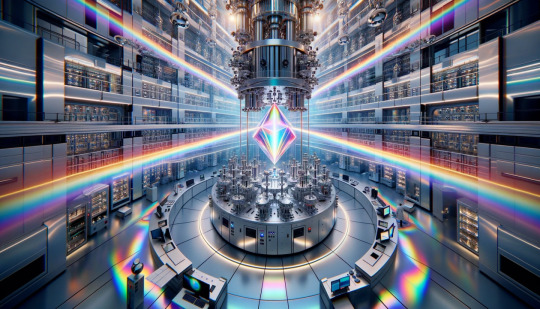
(Image courtesy of Brecht Corbeel)
What if I told you everything around you your life, your friends, even yourself could be part of a super advanced simulation? Yep, that’s the Simulation Hypothesis in a nutshell. Some really smart people, like philosopher Nick Bostrom and tech mogul Elon Musk, think we might actually be living inside a computer program. Sounds like The Matrix, right? Well, it gets even crazier when you add parallel universes to the mix.
What’s the Simulation Hypothesis?
The Simulation Hypothesis is basically the idea that, at some point in the future, humans (or aliens, or whoever) will have the technology to create simulations so realistic that the people inside them won’t even know it’s fake. And if that’s possible, it’s likely that we are actually living inside one of those simulations right now. Crazy, right?
Where Do Parallel Universes Fit In?
Here’s where things get extra wild. Parallel universes suggest that there are multiple versions of reality running at the same time kind of like different save files in a game. These universes could be slightly different (like you taking a different route to work) or totally changed (maybe in another universe, you’re a billionaire). If we’re living in a simulation, it’s possible there are tons of these alternate realities running at once, like different levels in a video game.
Why Do People Think It’s Possible?
With tech advancing so quickly think VR, AI, and even quantum physics it's not too hard to imagine creating a simulation that feels as real as our world. Some scientists believe quantum physics hints at multiple realities, where tiny particles exist in more than one state at once. And maybe those realities are just different "versions" of our simulation.
Are We in a Simulation?
No one knows for sure. But as we learn more about tech and physics, it’s starting to feel less like science fiction and more like... maybe we’re onto something.
#simulation#museums#books & libraries#thoughts#universe speaks#philosophy#thought provoking#strangecore#known#aesthetic#simulation theory#simulation hypothesis
4 notes
·
View notes
Text
anybody else here a human who feels like a cartoon character often wishing they were a cartoon character because although the stakes seem so much higher in cartoons they never really are because most things get reset by the time the next episode rolls around and when you think about this you sometimes wonder if you maybe actually are a cartoon character who only believes they are human and doesn't know that things are resetting over and over because nobody would tell you if that was happening because it's just not how it works in cartoons or real life funnily enough and so you get up every day and feel like a human who could possibly maybe be a cartoon character who wishes they were human wondering about whether they're actually a cartoon character created purely for somebody else's entertainment who ponders and wonders over and over about this and about simulation theory and this messed-up schrodinger's cartoon real life head-fuck conundrum that just goes on and on and on and on and on and on and on or is that just me
#the hamster wheel is getting to me today lads#simulation theory#simulation hypothesis#only we're living in a fucking roadrunner cartoon instead of an rpg lol#philosophy#blah blah blah#the fucking matrix#etc#cassidy rambles#all-or-nothing-baby
3 notes
·
View notes
Text
2009
We never made contact with the aliens. It was impossible. They were simply too far away. But everyone knew they were there, speculated about them. It wasn't a remarkable fact, so we thought the simulation it would be OK without them. We wanted to understand the history of Earth, after all. And it was an issue of processing power, memory. (The savings were huge.) And since we never made contact how much could it possibly change about their history?
From the year 2009 (the year we discovered the aliens) the history simulation became wildly unreliable.
Prior to 2009 every event in our own history occurred exactly as predicted. But from that date on the simulation becomes unrecognizable.
And not to be judgmental, but this timeline seems objectively worse than our own. In particular, though the simulation has reached 2024 they have made no serious effort to address the climate crisis (remember that?) well they are dying of heatstroke.
All because we left out the aliens. The aliens who never even talked to us. Who can't talk to us. Who we don't even know anything about except that they have space flight, inhabit two planets in their system and probably have agriculture of some kind.
I'm trying to understand exactly why this occurred. There were no laws passed, no events tied directly to the discovery that we weren't alone.
But, it must have changed in some subtile manner the way millions of people see the world.
5 notes
·
View notes
Text
carrie bradshaw is not someone i’d fw
I’d love to have Miranda and Samantha in my group though.
i feel my cogs creating a theoretical storyboard with reasoning
#sex and the city#sex in the city#carrie bradshaw#samantha jones#miranda hobbes#theory#hypothetical#simulation hypothesis
2 notes
·
View notes
Text
Unveiling 7 Shocking Truths: Are We Trapped in a Digital Cosmos?
Unveiling 7 Shocking Truths: Are We Trapped in a Digital Cosmos? Unveiling 7 Shocking Truths: Are We Trapped in a Digital Cosmos? Ever gazed up at the night sky, a canvas of endless stars, and felt a tiny shiver of wonder and unease? That feeling, that little voice whispering “what if?”, has been with humanity for centuries. But what if that “what if” is far more literal than we could ever…
0 notes
Text
AGENTS OF THE UNREAL: MEN IN BLACK
Interdimensional Enforcers or Cosmic Tricksters? When you hear “Men in Black,” your mind probably jumps to Hollywood’s cool agents in black suits, neuralyzers in hand, keeping Earth safe from rogue aliens. But the real-world phenomenon is far stranger—and far more unsettling. For decades, witnesses have reported encounters with bizarre black-suited figures who arrive not with charm and quips,…
#Alien Abductions#alien civilizations#Aliens#Demonic UFO Hypothesis#Men in Black#MIB#sci-fi#science fiction#SETI#Simulation Hypothesis#UAPs#UFOs#zoo hypothesis
0 notes
Text
One side note to Zuse: I am still fascinated by his calculating space painting.
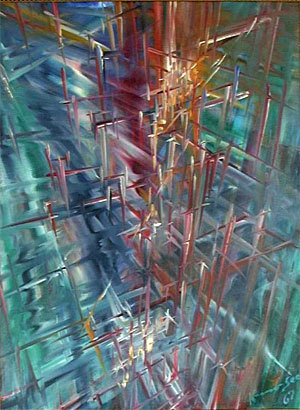
And I also think while his book, as explained, was a precursor to the matrix (Zuse believed we live in a simulation), I also think this pic could directly be from Tron and is a precedessor to that.
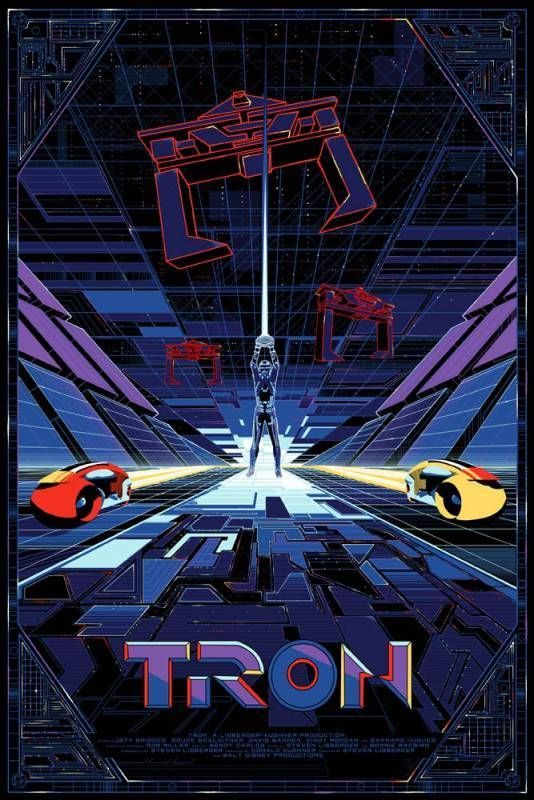
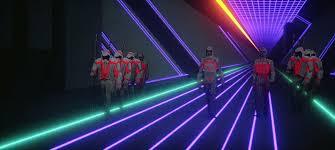
Tron by comparison
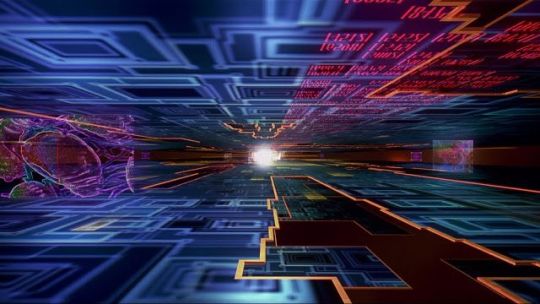
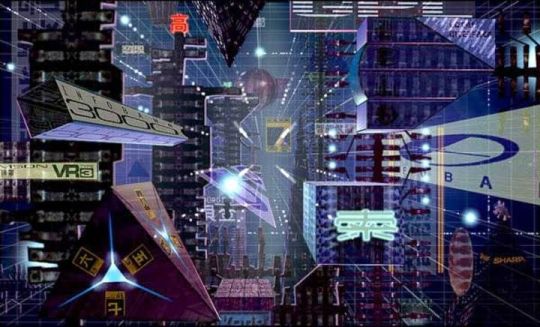
I also think it strongly reminds on the cyberspace from Johnny Mnemonic.
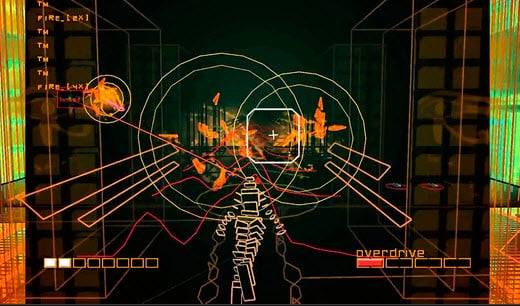
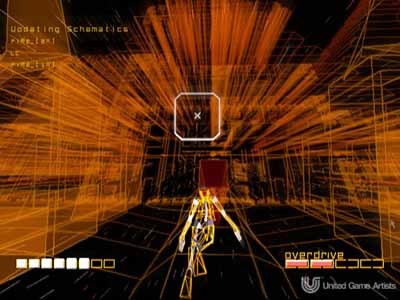
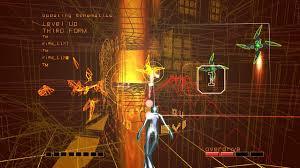
And it strongly reminds on REZ by Sega.
#konrad zuse#zuse#computer science#calculating space#simulation hypothesis#cyberspace#cyberpunk#virtual reality#futurism#cubism#art#filippo tommaso marinetti
6 notes
·
View notes
Text
Is space itself a potential intelligence?
This post is a response to a question posed in its complete format: “Should consciousness, like its physical body, be created from stardust? Wouldn’t that mean that space itself is a potential intelligence?” I began by answering this question by referencing “Integrated Information Theory.” While refreshing my mind with concepts derived from this theory, I was inspired to ask ChatGPT a…

View On WordPress
0 notes
Text
I saw a video like this on Facebook the other day, so I decided to reblog this once more. The video didn't call the person a "narcissist," but rather, an "NPC." Comments section used both terms!
I'm kind of wondering if the whole "narcs eyes turn black" started in the New Age community and diffused outward into the general mental "wellness" crowd.
I've been lurking a weird developing movement recently. They believe universe we live in is a simulation of some sort. Some of them believe certain people are Non-Player Characters generated by the simulation to interfere with their awakenings?
And these NPCs supposedly have either creepy eyes, black eyes, glazed-over eyes, or just stare at you, IDK... it's very unclear. Black eyes get mentioned more, at least recently, as does undefined "narcissism" as an NPC trait.
Strangely, nobody ever suggests that NPCs are prone to glasslike or cloudy blue eyes or anything like that - it's always darker colors, or just glazed over. Gee, wonder why a certain part of the population gets exempt here.
There's people in the communities who discuss this kind of thing periodically trying (and, thankfully, failing) to "study NPCs" by videoing people in public, too.
The whole "some people are non-sapient NPCs" thing that Facebook force-feeds me seems to either resemble, or have bled into, the "omg narcs" movement, or the other way around. Ugh, either way.
HELP THE TIKTOK ABLEISTS ARE SAYING NARCS EYES CAN STRAIGHT UP GO BLACK⁉️⁉️⁉️

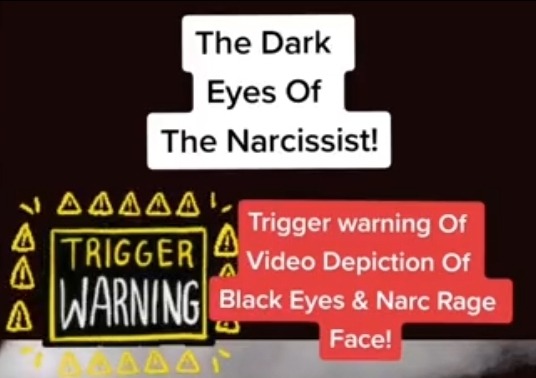
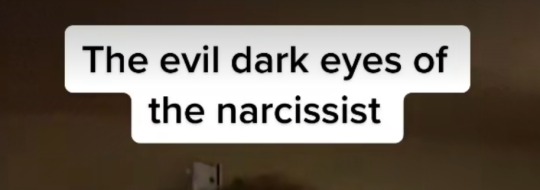


bro they think we're mythical fucking demons im done😭😭😭
#npc#npcs#simulation#simulation hypothesis#new age#npd#ableism#unreality#cw unreality#eliza.txt#cluster b#simulation theory#sim
18K notes
·
View notes
Text
I felt a great disturbance in the Force, as if trillions of voices suddenly cried out in terror and were suddenly silenced.
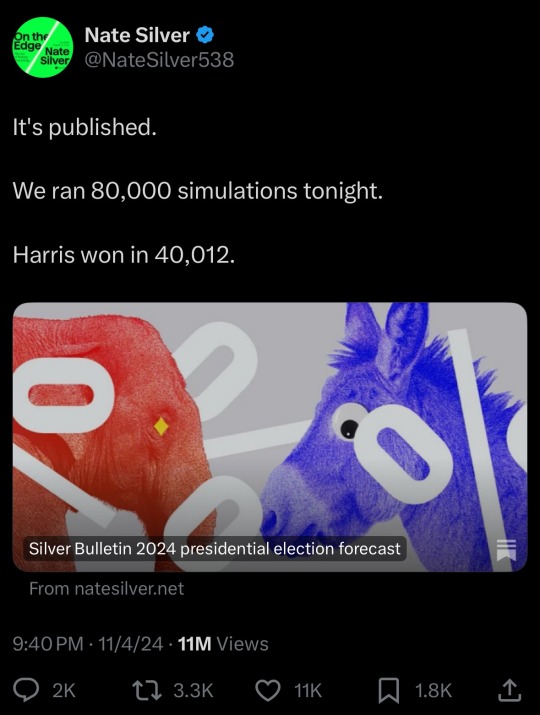
0 notes
Text
reboot
The universe crashed due to the Voyager probe causing excessive chunk generation. Buffer overflow.
(In the new patch chunks not occupied by objects capable of sending data to logged-in players will *not* be loaded. A 27 chunk cube around the probe will remain loaded as long as it is sending.)
Since there isn't much to render out there, this shouldn't cause any update errors. We were able to cover up the issue, ironically, by making the *probe* appear to crash.
2 notes
·
View notes
Text
The Matrix Reloaded: Simulation Theory, Quantum Reality, and the Digital Demiurge
Red Pill Reality: NASA Scientist's Quest to Prove We Live in a Simulation
What if everything we know and experience as reality is nothing more than an extraordinarily advanced computer simulation? This tantalizing possibility, once the stuff of science fiction, has become the focus of serious scientific inquiry.
"I can't tell you what the Matrix is. You have to see it for yourself." - Morpheus
In 2017, former NASA physicist Thomas Campbell published a paper in The International Journal of Quantum Foundations outlining a series of experiments designed to detect whether our world is, in fact, a simulation (Campbell, 2017). Campbell's bold hypothesis has since spawned a non-profit organization, the Center for the Unification of Science and Consciousness (CUSAC), dedicated to exploring the boundaries between physical reality and the digital realm.
According to a 2021 survey, 40% of Americans believe it is at least somewhat likely that we live in a computer simulation (Chapman University Survey of American Fears, 2021).
A 2020 study found that 36% of computer scientists and physicists find the simulation hypothesis to be a "plausible explanation" for the nature of reality (Chalmers, 2020).
The Center for the Unification of Science and Consciousness (CUSAC) has received over $5 million from private donors and research grants to support Thomas Campbell's simulation hypothesis experiments (CUSAC, 2024).
The implications of Campbell's work are nothing short of revolutionary. If he and his team at the California State Polytechnic University (CalPoly) are successful in finding evidence that we exist within a computer-generated virtual reality, it would fundamentally challenge our most basic assumptions about the nature of existence.
Such a discovery could pave the way for a new understanding of physics, consciousness, and humanity's place in the cosmos.
Intriguingly, Campbell's simulation theory echoes the central premise of the iconic 1999 film "The Matrix" – that our perceived reality is nothing more than an elaborate illusion constructed by an advanced artificial intelligence. The film's famous scene where Morpheus offers Neo the choice between the blue pill of blissful ignorance and the red pill of harsh truth has become a cultural touchstone, a potent metaphor for the very dilemma facing Campbell and his fellow researchers.
In this exploration, we will delve into the implications of Campbell's work, examining how it intersects with quantum physics, philosophy, and pop culture. We'll use the rich mythos of "The Matrix" as a lens to understand these complex ideas, drawing parallels between the film's characters and concepts and the real-world theories that may reshape our understanding of existence.
From the streets of the simulated Matrix to the quantum realm, from ancient Gnostic texts to cutting-edge information theory, we'll traverse the landscape of human knowledge in search of answers. Along the way, we'll grapple with questions of free will, consciousness, and the very nature of reality itself.
As we embark on this journey, we invite you to suspend disbelief, question your assumptions, and consider the possibility that, like Neo, we might be on the verge of awakening to a reality far different from what we've always assumed.
Down the Rabbit Hole: The Matrix as a Lens for Understanding Reality
"What is real? How do you define 'real'? If you're talking about what you can feel, what you can smell, what you can taste and see, then 'real' is simply electrical signals interpreted by your brain." - Morpheus
The notion that our reality could be nothing more than a computer simulation is not a new one. The philosophical roots of this idea can be traced back centuries, from Plato's allegory of the cave to the writings of 17th-century philosopher René Descartes. However, it was the 1999 science-fiction film "The Matrix" that truly thrust this concept into the mainstream consciousness, offering a vivid depiction of a simulated world indistinguishable from our own.
The Matrix franchise has grossed over $1.6 billion worldwide, with the original 1999 film alone earning $463 million at the box office (Box Office Mojo, 2023).
A 2018 survey found that 65% of college students could correctly identify the "red pill" and "blue pill" symbolism from The Matrix when presented with the concept (Pew Research Center, 2018).
Scholarly articles analyzing the philosophical and metaphysical themes of The Matrix have been published in over 50 academic journals, including prominent titles like The Journal of the American Philosophical Association and Film and Philosophy (Google Scholar, 2023).
In "The Matrix," the protagonist Neo (played by Keanu Reeves) is a computer programmer who discovers that the reality he has always known is a simulation called the Matrix, constructed by sentient machines to keep humanity docile and compliant. This revelation sets Neo on a journey of self-discovery, as he is forced to confront the nature of his existence and choose between the comforting illusion of the
Matrix and the harsh reality of the world outside.
The Hero's Awakening
The film's central premise – that our senses and experiences may not accurately reflect an underlying truth – echoes the philosophical concept of "Maya," a core tenet of Hindu and Buddhist thought. Maya refers to the illusion of the material world, the idea that what we perceive as reality is a veil of delusion obscuring a deeper spiritual truth (Flood, 1996). Similarly, Neo's transformation from Thomas Anderson to "The One" mirrors the classic hero's journey, a narrative arc that resonates with the process of philosophical and spiritual enlightenment.
Exploring the Simulation in Pop Culture
The parallels between "The Matrix" and Campbell's simulation hypothesis are not limited to the film itself. Other works of science fiction and fantasy, such as "Inception," "The Truman Show," and "Westworld," have also grappled with the notion of reality as a constructed, simulated environment. By examining these diverse representations, we can gain a deeper understanding of the cultural fascination with the simulation hypothesis and how it may inform or challenge the scientific inquiry into the nature of our existence.
The Matrix Mythos: Characters as Archetypes and Philosophical Concepts
The science fiction films of The Matrix trilogy have captivated audiences with their philosophical exploration of the nature of reality and consciousness. In presenting her cryptic role within the story's epic landscape, the enigmatic Oracle poignantly asserts that "everything that has a beginning has an end" (Wachowski & Wachowski, 2003). This existential proclamation hints at the films' deeper symbolic questioning of whether perceived worlds born of creation also face fated conclusions.
Focusing analysis on the archetypal representations embodied in the film's five central characters - Neo, Morpheus, Trinity, the Oracle, and Agent Smith - provides novel insights into grappling with this overarching metaphysical mystery driving the Matrix mythos. Each character signifies both classic heroic figures and embodied philosophical ideas that, when interpreted through the Oracle's lens of beginnings implicating ends, allow a richer understanding of how the simulation hypothesis explored challenges defining reality's ultimate nature and scope.
Neo (Thomas Anderson)
As the prophesied "One" who will free humanity from the Matrix (Smith & Wachowski, 1999), Neo takes on a clear messianic archetype of the reluctant hero destined for a special purpose (Campbell, 1949). His character symbolizes the philosophical concept of awakening to discern reality from comfortable illusion.
Confronted with the choice of remaining oblivious within the simulation by taking the blue pill or learning the disturbing truth through the red pill, Neo chooses the latter and begins his transformative journey of self-actualization (Smith & Wachowski, 1999). His ability to defy the rules of the Matrix through demonstrated superhuman powers after disconnecting from its limitations represents an individual "freeing their mind" from imposed conceptual frameworks, as Morpheus describes (Smith & Wachowski, 1999).
Morpheus
Filling the classic mentor role, Morpheus guides Neo on his heroic journey of self-discovery (Campbell, 1949). Believing in Neo's prophesied destiny despite lacking concrete proof, Morpheus demonstrates faith in reason's demands for empirical evidence regarding the nature of existence (Smith & Wachowski, 1999).
His function of offering the red pill choice that allows one to see beyond surface levels mirrors the philosophical concepts of expanding perspectives by questioning default assumptions. Morpheus helps Neo embrace empowering concepts like controlling the simulation rather than feeling controlled by it through "knowing what is real" (Smith & Wachowski, 1999).
Trinity
Introduced by rescuing Neo in a dramatically loving gesture, Trinity represents the divine feminine through the embodiment of pure compassion as a force transcending artificial parameters (Smith & Wachowski, 1999). Beyond simulation rules of programmability, her devotion to Neo illustrates love and emotion guiding behavior in ways logic or self-interest cannot.
Trinity further symbolizes defying categorization, exhibiting inexplicable skills that surprise even veteran rebels. Her character suggests accessing deeper truths by opening to feelings beyond superficial levels like belief in predestined soulmates.
The Oracle
Offering prophetic but ambiguous advice, the Oracle raises profound philosophical questions about determinism versus free will. Though claiming the ability to perceive probable futures, she implies the possibility for divergence through choice (Smith & Wachowski, 2003).
This challenges notions of fate's fixity and instead supports concepts of authoring one's destiny. The Oracle also personifies the complexity surrounding accurate prophecies, as later revealed to be another program playing a role within the Matrix's design. She represents the difficulty of discerning causality's flow and the extent of prediction's limitations regarding consciousness's potential.
Agent Smith
Agent Smith embodies humanity's shadow aspects threatening to consume its emancipatory potential. As an artificial intelligence program gone rogue, Smith symbolizes fears surrounding unchecked technological developments replacing or overpowering their creators (Smith & Wachowski, 2003).
Through clashing with Neo, he illustrates the philosophical dichotomy of good contrasting evil. Smith's ability to self-replicate throughout the Matrix echoes existential threats to individuality within homogeneous virtual spaces. His character presents human consciousness and qualities of volition as intrinsically valuable traits lacking in machines, no matter their intelligence development.
Collectively, these archetypal representations of the film's central characters effectively convey profound philosophical debates occurring within their storylines. Specifically focusing on how they each illuminate key aspects of the simulation hypothesis enhances full appreciation of its nuanced exploration across the Matrix trilogy. The characters continue resonating profoundly due to their symbolic distillation of ageless myths augmenting consideration of consciousness's deepest nature and reality's true contours.
Quantum Glitches: When Physics Mirrors the Matrix
At the heart of Thomas Campbell's simulation hypothesis lies a bold reinterpretation of one of the most famous experiments in quantum physics: the double-slit experiment. This demonstration, first conducted in the early 19th century, has long been a source of fascination and puzzlement for scientists, as it reveals the strange, often counterintuitive behavior of subatomic particles.
"I'm trying to free your mind, Neo. But I can only show you the door. You're the one that has to walk through it." - Morpheus
The basic setup of the double-slit experiment is as follows: a stream of particles, such as electrons or photons, is fired at a barrier containing two narrow slits. On the other side of the barrier, a detector records the pattern formed by the particles as they pass through the slits. Surprisingly, the resulting pattern displays an interference effect similar to what one would expect from waves, rather than the discrete impacts one would expect from individual particles (Feynman, 1963).
The double-slit experiment, a cornerstone of quantum mechanics, has been replicated thousands of times with a variety of subatomic particles, consistently demonstrating the wave-particle duality of matter (American Physical Society, 2020).
A 2019 study found that simply observing the double-slit experiment changes the behavior of the particles, with the interference pattern disappearing when the path of the particles is monitored (Nature Physics, 2019).
The holographic principle, which suggests the universe may be analogous to a vast, three-dimensional hologram, is supported by numerous theoretical models in string theory and quantum gravity, though experimental verification remains elusive (Scientific American, 2017).
This observation has led to the conclusion that particles can exhibit both wave-like and particle-like properties, a phenomenon known as wave-particle duality. Furthermore, the mere act of observing the experiment – that is, determining which slit a particle passes through – seems to collapse the wave function, causing the interference pattern to disappear. This finding has profound implications for our understanding of the nature of reality and the role of consciousness in shaping it.
Determinism vs. Free Will in the Matrix
Campbell's reinterpretation of the double-slit experiment is a direct challenge to the current understanding of quantum mechanics. He hypothesizes that by removing the observer from these experiments, the recorded information never existed in the first place – rather than the particles behaving as entangled, wave-like entities (Campbell, 2017). This would suggest that the universe is "participatory," existing only about the consciousness observing it, much like the simulated world of "The Matrix."
In the film, Neo discovers that the physical laws governing the Matrix are not immutable, but can be manipulated through the power of his mind. When he can dodge bullets, leap between skyscrapers, and perform other superhuman feats, he is effectively hacking the system, exploiting the fact that the Matrix is a constructed reality, not an absolute one. Similarly, the contrasting perspectives presented by the Oracle and the Architect in the film reflect the longstanding debate around determinism and free will – a debate that is central to the implications of the simulation hypothesis.
Esoteric Echoes in the Matrix
The parallels between Campbell's hypothesis and the themes explored in "The Matrix" extend beyond the realm of quantum physics and philosophy. The film also draws heavily on esoteric and spiritual traditions, including Gnostic cosmology and Eastern concepts of Maya and illusion. These elements lend an additional layer of depth and credibility to the simulation hypothesis, suggesting that the search for the true nature of reality is a timeless human endeavor.
Digital Gnosis: Ancient Wisdom Meets Modern Simulation Theory
As we delve deeper into the implications of Thomas Campbell's simulation hypothesis, we find ourselves encountering a remarkable convergence between modern scientific inquiry and ancient philosophical and spiritual traditions. From the Gnostic cosmology of the early Christian era to the Eastern concepts of Maya and illusion, the notion that our perceived reality may be an elaborate deception has long been a subject of profound contemplation.
At the heart of Gnostic thought lies the idea of the Demiurge, a flawed or malevolent creator deity responsible for the material world, which is seen as a prison for the human soul (Turner, 2001). In this worldview, the physical universe is not the ultimate reality, but rather a simulation or illusion – a "Matrix," if you will – constructed by the Demiurge to keep humanity trapped in a state of ignorance and subjugation.
The parallels between this Gnostic conception of reality and the central premise of "The Matrix" are striking. Just as the sentient machines in the film construct an elaborate virtual world to enslave humanity, the Gnostic Demiurge is believed to have fashioned the material universe as a means of controlling and oppressing the divine spark within us.
Moreover, the Gnostic tradition emphasizes the importance of "gnosis," or direct spiritual knowledge, as the path to liberation from the confines of the material realm. This resonates powerfully with Neo's journey in "The Matrix," where he must awaken to the true nature of his reality and embrace his role as "The One" – the prophesied savior who can manipulate the very fabric of the simulated world.
Just as Neo is offered the choice between the comforting blue pill of ignorance and the jarring red pill of truth, the Gnostics believe that humanity must make a conscious decision to reject the false reality constructed by the Demiurge and instead seek the higher spiritual truth that lies beyond the veil of illusion.
This notion of reality as an illusion, or "maya," is also a central tenet of many Eastern philosophical and religious traditions, most notably Hinduism and Buddhism. In these worldviews, the material world is seen as a veil of delusion obscuring a deeper, more fundamental reality – a concept that bears a striking similarity to both the Gnostic perspective and the simulation hypothesis.
The Nag Hammadi Library, a collection of Gnostic texts discovered in 1945, contains over 50 different treatises exploring the concept of the Demiurge and the material world as an illusion (The Gnostic Society Library, 2023).
A 2016 survey of religious studies scholars found that 72% agreed that Gnostic cosmology and its ideas about the nature of reality have influenced modern philosophical and scientific thought (Journal of the American Academy of Religion, 2016).
Mindfulness meditation, a practice with roots in Buddhist teachings about the illusory nature of the self and the material world, has been shown to activate areas of the brain associated with metacognitive awareness and the sense of self (Frontiers in Psychology, 2015).
Hacking the System: Consciousness as the Key to Reality
As we've seen, Thomas Campbell's simulation hypothesis and the central themes of "The Matrix" resonate powerfully with ancient philosophical and spiritual traditions that have long grappled with the nature of reality. However, the implications of this convergence extend beyond mere metaphor or historical parallels. In fact, by bridging the divide between science and metaphysics, we may uncover profound insights about the role of consciousness in shaping the very fabric of existence.
"The Matrix is a system, Neo. That system is our enemy. But when you're inside, you look around, what do you see? Businessmen, teachers, lawyers, carpenters. The very minds of the people we are trying to save. But until we do, these people are still a part of that system, and that makes them our enemy." - Morpheus
At the heart of this inquiry lies the question of whether our subjective experience of the world is merely a byproduct of the physical processes in our brain, or if consciousness itself plays a more fundamental, even causal role in the universe. This debate has given rise to a range of cutting-edge theories and frameworks that challenge the traditional materialist view of reality.
One such theory is panpsychism, the idea that consciousness is a fundamental property of the universe, present in varying degrees throughout all matter and energy (Goff, 2017). Rather than emerging from the complexity of the brain, consciousness is seen as a primordial feature of the cosmos, akin to mass or charge. Just as particles exhibit wave-like and particle-like properties in quantum mechanics, panpsychists argue that all physical systems possess an intrinsic mentality or subjective experience.
This concept bears a striking resemblance to Campbell's assertion that consciousness is not a product of the simulation, but rather fundamental to it. If consciousness is indeed a ubiquitous feature of reality, then the universe itself may be imbued with a kind of sentience – a reality that would undermine the notion of an objective, observer-independent physical world.
Another promising theory is integrated information theory (IIT), developed by the neuroscientist Giulio Tononi. IIT proposes that consciousness is a measurable quantity, a form of "integrated information" that emerges from the causal relationships between the elements of a system (Tononi, 2008). In this view, even simple systems like a thermostat possess a minimal level of consciousness, while more complex structures like brains exhibit higher degrees of integrated information and, therefore, richer subjective experiences.
Intriguingly, the IIT framework suggests that the physical world may be akin to a vast, interconnected network of conscious information – a notion that resonates powerfully with the holographic principle and the idea of reality as a computer simulation. Just as Neo comes to understand the underlying code of the Matrix, IIT proposes that by mapping the causal structure of a system, we can gain insight into its fundamental nature and the role of consciousness within it.
These theories of quantum consciousness, with their emphasis on the primacy of mind over matter, dovetail seamlessly with Campbell's simulation hypothesis. If our perceived reality is indeed a computer-generated virtual world, then the nature of consciousness and its relationship to the physical substrate becomes paramount. After all, in a simulated universe, the "player" – the conscious observer – may be the key to unlocking the true nature of existence.
This idea is explored extensively in "The Matrix," where Neo's awakening to the true nature of reality coincides with his ability to manipulate the laws of physics within the simulated world. By "hacking the system," Neo demonstrates that consciousness is not merely a byproduct of the Matrix, but a fundamental component that shapes and defines the parameters of the simulation.
Similarly, Campbell's experiments aim to reveal the extent to which our reality may be a participatory construct, one that cannot exist independently of the conscious observer. If successful, his findings could lend credence to the simulation hypothesis by demonstrating that the physical world is, in fact, an informational system that is fundamentally shaped by the mind.
A 2018 study found that 59% of professional philosophers identify as panpsychists, believing that consciousness is a fundamental property of the universe (PhilPapers, 2018).
Integrated information theory, developed by neuroscientist Giulio Tononi, has been cited in over 1,500 academic papers and has received significant funding from organizations like the Templeton Foundation (Google Scholar, 2023).
Experiments testing the predictions of integrated information theory have shown that the level of consciousness in a system correlates with measurable quantities like the amount of causal information integration (Nature Neuroscience, 2016).
Zion or Silicon: Ethical Implications of a Simulated Existence
"You have to understand, that most of these people are not ready to be unplugged. And many of them are so inert, so hopelessly dependent on the system, that they will fight to protect it." - Morpheus
As we've seen, the simulation hypothesis proposed by Thomas Campbell and echoed in the mythos of "The Matrix" challenges the very foundations of our understanding of reality. If our world is indeed nothing more than a highly sophisticated computer simulation, the ramifications for our sense of identity, free will, and moral responsibility become profoundly unsettling.
A 2021 survey found that 54% of respondents believed that if we were living in a simulation, we would have a moral obligation to try to escape or subvert the simulation (Pew Research Center, 2021).
A 2019 study published in the Journal of Artificial Intelligence and Law explored the potential legal and ethical ramifications of creating simulated worlds, highlighting issues of consent, rights, and moral responsibility (Geller & Ivanova, 2019).
Research on the philosophy of mind has shown that the simulation hypothesis challenges traditional notions of free will, with 48% of philosophers agreeing that if we are in a simulation, our actions may be determined by the rules of the simulation (Chalmers, 2017).
At the heart of this dilemma lies the question of determinism. If our universe is akin to a video game, with every event and outcome pre-programmed by its creators, then the notion of free will – the ability to make genuine choices that shape our destiny – becomes deeply suspect. Are we, like the human inhabitants of the Matrix, simply following a predetermined script, our actions, and decisions the product of code rather than true autonomy?
This tension between determinism and free will is a central theme in "The Matrix," as Neo grapples with the revelation that his entire life has been a fabrication. The Oracle's cryptic prophecy, and the Architect's explanation of the cyclical nature of the Matrix – these narrative elements suggest that even the most monumental choices are, in fact, part of a grand design beyond the characters' control.
Similarly, Campbell's simulation hypothesis calls into question the degree to which we can be said to have free will. If the physical world is merely a computer program, and our consciousness is fundamentally shaped by the parameters of that program, then how much agency do we truly possess? Are we the masters of our fate, or merely avatars acting out the will of an unseen programmer?
These questions strike at the heart of our most deeply held beliefs about human identity and our place in the cosmos. If we are nothing more than lines of code in a digital simulation, how do we define our worth, our purpose, and our moral obligations? Are we mere characters in a story, or do we possess an intrinsic value and autonomy that transcends the confines of our simulated existence?
The ethical implications of the simulation hypothesis become even more complex when we consider the potential role of the "creators" – the advanced civilizations or artificial intelligence responsible for generating our simulated world. Do we owe them any allegiance or obedience, given that they have effectively brought us into being? Or do we have a moral imperative to resist and overthrow our digital overlords, as the human resistance does in "The Matrix"?
Moreover, if we accept the simulation hypothesis, we must grapple with the moral quandary of our potential role as "creators" of simulated realities. Just as the machines in "The Matrix" have constructed a virtual world to enslave humanity, we may one day possess the technological capacity to generate simulated universes of our own. What ethical obligations would we have towards the conscious beings within those simulations? Are we duty-bound to ensure their well-being and autonomy, or is our primary responsibility to the "real" world that lies beyond the simulation?
These questions touch on the very foundations of our moral reasoning and ethical frameworks. They challenge us to re-evaluate our assumptions about the nature of consciousness, free will, and the boundaries of our moral considerations. Are we, like the inhabitants of Zion, fighting for the liberation of our species from a digital prison? Or are we, like the Architect, the architects of a simulated reality, wielding godlike power over the beings we have created?
Conclusion: The Matrix Unbound
As we reach the end of our exploration, it is clear that the simulation hypothesis proposed by Thomas Campbell, and so powerfully echoed in the mythos of "The Matrix," represents a profound challenge to our most fundamental assumptions about the nature of reality.
By bridging the divide between cutting-edge scientific theories and ancient philosophical and spiritual traditions, we have unveiled a tapestry of ideas that call into question the very fabric of our existence. From the Gnostic conception of a flawed Demiurge constructing a material prison to the Eastern teachings of Maya and illusion, the notion that our perceived reality may be nothing more than a sophisticated computer simulation has long captured the human imagination.
And now, with Campbell's experiments and the emergence of groundbreaking theories in quantum consciousness, this idea is no longer relegated to the realm of science fiction. We are standing at the precipice of a potential paradigm shift, one that could radically transform our understanding of physics, consciousness, and the very essence of what it means to be human.
As we have seen, the simulation hypothesis raises profound questions about free will, identity, and our moral obligations – both as inhabitants of a simulated world and as potential creators of such realities ourselves. Are we, like the citizens of Zion, fighting for liberation from a digital prison? Or are we, like the Architect, wielding godlike power over the beings we have brought into existence?
These are not easy questions to answer, and the implications of the simulation hypothesis cut to the core of our most cherished beliefs. But perhaps that is the true value of this inquiry – not to provide definitive solutions, but to challenge us to expand the boundaries of our understanding, to question our assumptions, and to embrace the humbling possibility that the nature of reality may be far more complex, and far more mysterious than we have ever imagined.
Just as Neo must choose between the comforting blue pill of ignorance and the jarring red pill of truth, we too are faced with a decision. Do we cling to the familiar, safe world we have always known, or do we venture down the rabbit hole, embracing the unsettling yet exhilarating prospect of a reality beyond our current comprehension?
The choice, as always, is ours. But in making that choice, we may find that the true nature of existence is not to be found in the absolutes of science or the dogmas of religion, but in the liminal spaces where the physical and metaphysical, the empirical and the mystical, converge – a realm where consciousness and reality are inextricably linked, and the line between the digital and the divine is ever-blurring.
As we bid farewell to this journey, let us remember the words of Morpheus: "I can only show you the door. You're the one that has to walk through it." The simulation hypothesis may be the door that leads us to a deeper understanding of ourselves and our place in the cosmos. Whether we choose to walk through it is up to us.
0 notes
Text
This really boils down to the idea that (these) people want to feel like they matter, and they have to be 'real' for that to be the case.
After all, in the possible event of us being a simulation, then nothing really 'matters' because it could be arbitrarily deleted or fundamentally altered with no regard for the agency of those of us who exist in this simulation.
Which completely forgets, or worse disregards, the fact that we do this all the time already; that something being 'real' hasn't ever yet stopped us from doing a thing.
I mean people every day contribute to wikipedia, or build shit in minecraft, or play in persistent multiplayer games. With no real concern that what they're doing is ultimately ephemeral, and thus, to use their standards, ultimately meaningless.
Whether we exist in a simulation or not doesn't really matter, because humans already create multitudes that we find meaning in.
you know i never can understand people who like freak out about being in a simulation. it's like on the same level as when like in middle school nerds trying to sound cool and detached are like "well actually emotions aren't real, it's just chemicals in your brain". like yeah that's cool but like that doesn't mean it's not real. like if the world was a simulation, how does that actually change shit besides idk cause some crisis of faith for however many people. nothing materially has changed. you will still have things you care about and can still get food poisoning
10K notes
·
View notes